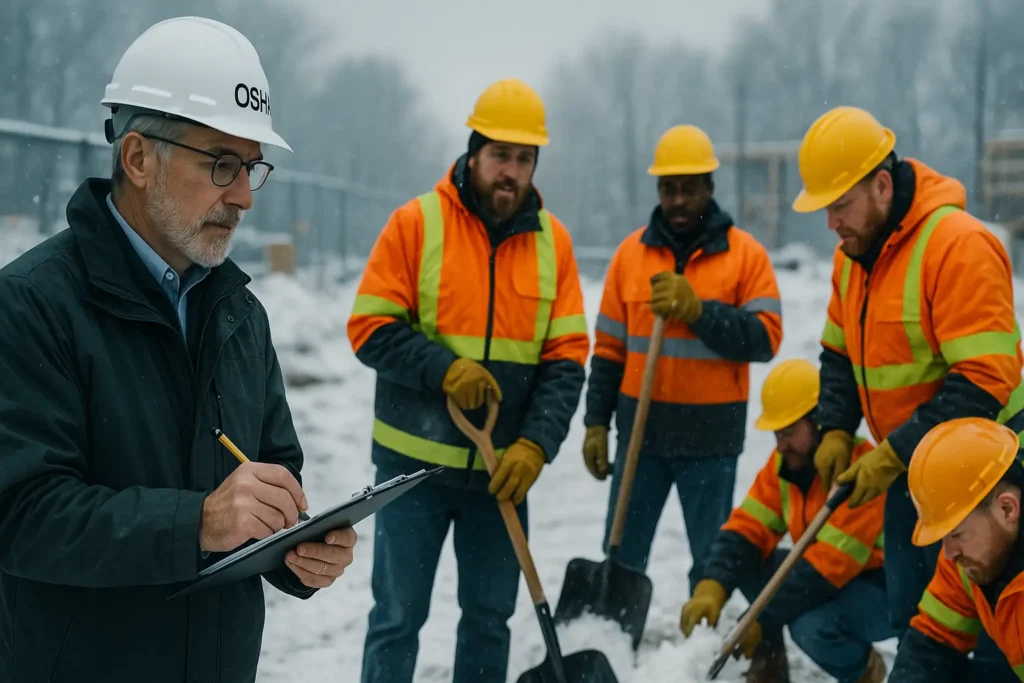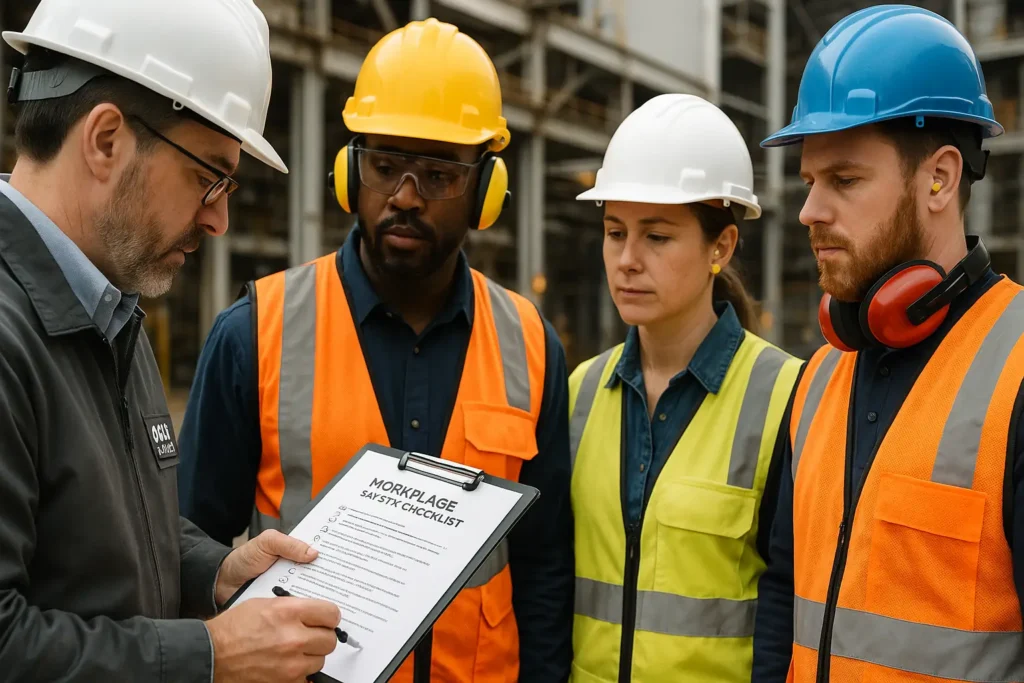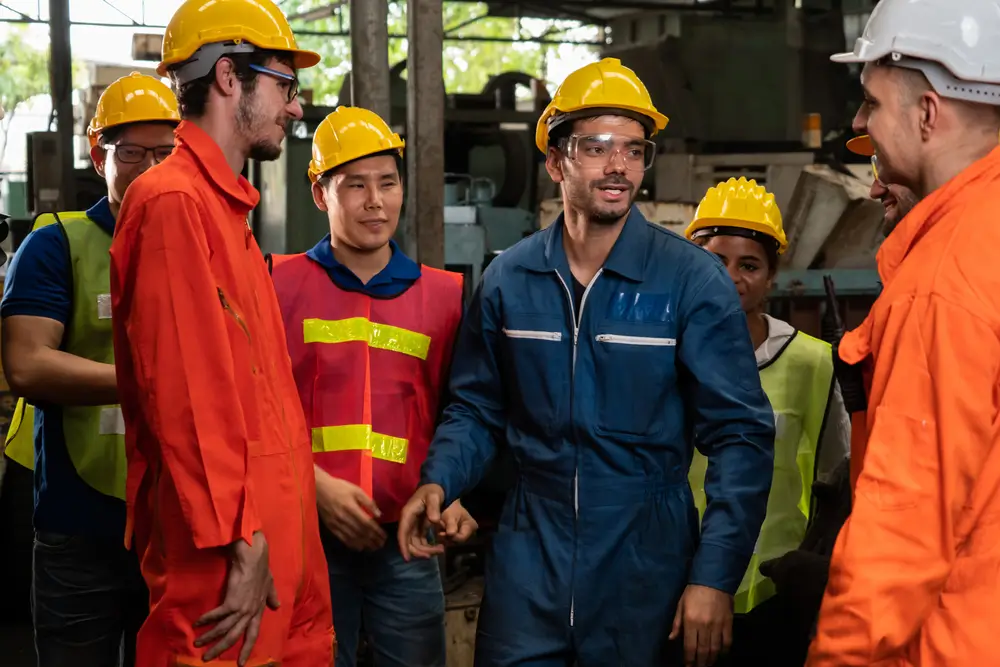How to Use Safety Moments at Work to Prevent Accidents in 2025
Safety moments are short, focused discussions or reminders that highlight key safety practices in the workplace. These moments are designed to keep employees alert, mindful, and proactive about avoiding risks during their daily tasks. By encouraging regular safety conversations, organizations can build a culture where safety is always top of mind. Employers can have safety discussions before a shift, during a meeting, or at the start of a project.
Mostly, workplace accidents happen due to small oversights or a lack of awareness. According to OSHA, over 2.8 million workplace injuries occur each year in the U.S., many of which could be prevented with better attention to hazards. Safety moments serve as quick, impactful tools to reduce risks, prevent accidents, and protect employees. In this blog, you can explore some important topics that can help you keep the team safe and productive. Read on!
Why Safety Moments Are Effective
Safety moments work because they are simple, quick, and easy to integrate into daily routines. By keeping safety top of mind, these brief reminders help employees stay alert to potential hazards before they escalate into accidents. Unlike lengthy training sessions, safety moments reinforce safe practices in a non-formal way, making them less intimidating and more relatable.
Employers can arrange team participation by allowing workers to share experiences and suggestions that strengthen the overall safety culture. When employees actively engage in these discussions, they develop a sense of ownership over workplace safety. This not only improves awareness but also creates a team environment where everyone looks out for one another. Moreover, over time, consistent safety moments build habits that can drastically reduce the likelihood of injuries and incidents at work.
Key Topics to Use as Safety Moments
To pick the most important safety topics for your team, you need to evaluate the overall performance. This helps you get a complete insight to discuss the confusion and possible hazards with your team. However, to help you list down some important safety topics, below are some of the most crucial safety topics you can learn:
1. Lifting Heavy Objects
Improper lifting is one of the leading causes of workplace back injuries. Workers should always bend their knees, keep the load close to their body, and avoid twisting while carrying weight. Using proper lifting techniques and asking for help with heavy loads can prevent long-term strain and serious accidents. It’s important to guide them about these hazards.
2. Situational Awareness
Accidents often occur when workers become too comfortable in their environment and stop noticing changes. It’s important to guide them about staying alert to moving equipment, changing conditions, or co-workers’ actions helps prevent unexpected hazards. A moment of awareness can be the difference between staying safe and getting injured.
3. Slips, Trips, and Falls
Cluttered walkways, wet floors, and poor housekeeping are common causes of slips and falls. Employees should know how to ensure that pathways are clear, spills are cleaned immediately, and proper footwear is worn. Good floor safety practices reduce one of the most frequent types of workplace injuries.
4. Wearing Appropriate Clothing
You can team your team that the right attire is the first line of defense against workplace hazards. Workers should wear PPE that fits properly, from helmets to gloves, and avoid loose garments that can get caught in machinery. Dressing safely ensures both comfort and protection throughout the job.
5. Awareness of Emergency Exits and Routes
In an emergency, knowing the fastest way out saves lives. It’s crucial to guide your employees to regularly review evacuation maps and keep exit paths clear of obstructions. Quick, confident movement during a crisis depends on preparation and awareness.
6. Workplace Violence
As you know that conflict at work can escalate into unsafe situations; hence, teach the teams to handle such situations carefully. Workers should recognize warning signs of aggression, report concerning behavior, and know the company’s procedures for prevention. A respectful, proactive approach helps keep the workplace safe for everyone.
7. Workplace Drug and Alcohol Misuse
Substance misuse impairs judgment, slows reaction time, and creates unnecessary risks on the job. Employers often enforce strict zero-tolerance policies to protect all workers. Staying substance-free ensures a safer and more reliable work environment.
8. Importance of Proper Rest
Fatigue can be just as dangerous as faulty equipment. Discuss how employees can ensure to build a proper work-life balance. Getting enough rest keeps workers alert, sharp, and able to respond quickly to hazards. Managing sleep and taking breaks helps maintain focus and prevents costly mistakes.
9. Reporting Workplace Accidents
One of the most important topics is to guide employees about prompt reporting. Accidents should never go unreported, no matter how small they seem. Quick, honest reporting allows hazards to be fixed, lessons to be learned, and future incidents to be prevented. A transparent safety culture protects everyone.
10. Avoiding Distractions at Work
Staying focused is critical to working safely. Mobile phones, unnecessary multitasking, and wandering thoughts can all lead to preventable accidents. Eliminating distractions ensures tasks are performed with care and attention.
Building a Culture of Safety Through Safety Moments
Safety moments are powerful tools for shaping workplace culture. When leaders actively participate, it reinforces the importance of safety from the top down. Peer-to-peer reminders create accountability across teams, while recognizing and rewarding proactive safety behavior motivates everyone to stay engaged and vigilant. Hence, it’s important to dedicate time or a meeting slot to build stronger relationships with your team and to encourage transparency.
Wrap Up
Safety moments may seem small, but their impact is lasting. By taking just a few minutes to discuss risks, share reminders, and reinforce safe practices, organizations build stronger habits and a culture where safety is second nature. When everyone actively participates, workplaces not only reduce incidents but also create an environment where employees feel valued, supported, and protected.
Related Posts

Training on a Budget? Find OSHA Training at a Low Price

OSHA Winter Safety Tips for 2025: Protect Outdoor Workers


